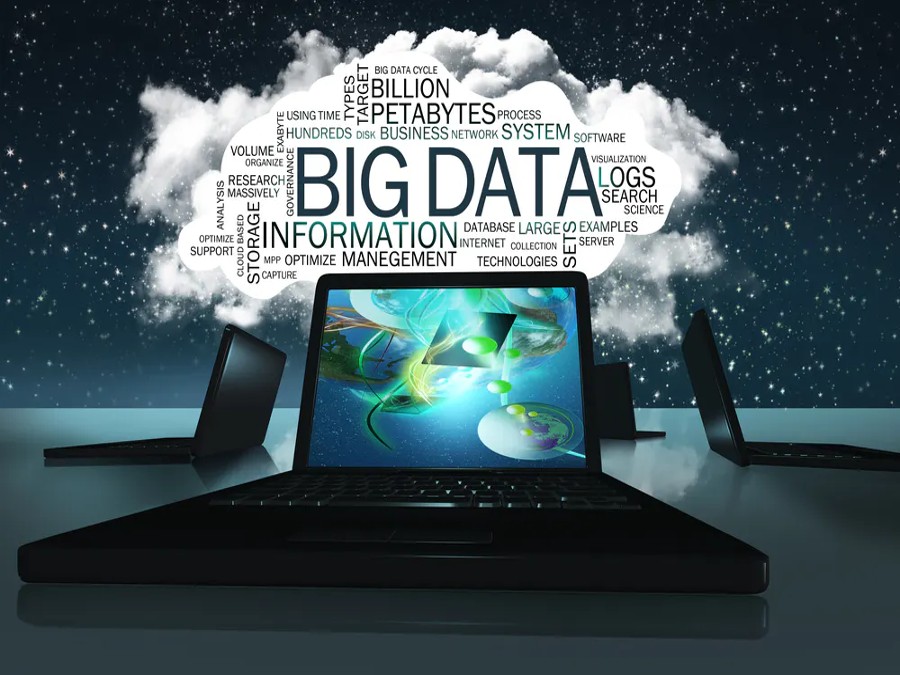P1]
In today’s data-saturated world, organizations are awash in information. From customer transactions and website interactions to sensor readings and social media posts, vast quantities of data are generated every second. However, raw data alone is of little value. To derive meaningful insights and gain a competitive edge, organizations need to transform this data into actionable knowledge. This is where data mining, also known as knowledge discovery in databases (KDD), comes into play.
Data mining is the process of discovering patterns, trends, and anomalies from large datasets. It employs a combination of statistical analysis, machine learning, and database technologies to extract valuable insights that can be used to improve decision-making, predict future outcomes, and optimize business processes. It’s more than just searching for specific information; it’s about uncovering hidden relationships and connections that would otherwise remain buried beneath the surface.
The Data Mining Process: A Step-by-Step Approach
The data mining process is typically iterative and involves several key stages:
Business Understanding: This is the foundational step where the objectives and goals of the data mining project are clearly defined. Understanding the business context is crucial to ensure that the analysis addresses relevant questions and provides actionable insights. This involves identifying key performance indicators (KPIs), defining the scope of the project, and understanding the potential impact of the findings.
Data Understanding: This stage focuses on exploring and understanding the available data sources. It involves collecting data from various sources, examining its characteristics, and identifying any potential issues such as missing values, inconsistencies, or biases. Descriptive statistics, data visualization techniques, and exploratory data analysis (EDA) are commonly used to gain a deeper understanding of the data.

Data Preparation: This is often the most time-consuming and critical stage. It involves cleaning, transforming, and preparing the data for analysis. This may include handling missing values (e.g., imputation or removal), correcting inconsistencies, transforming data types, scaling numerical features, and selecting relevant attributes. The goal is to create a dataset that is suitable for the chosen data mining techniques.
Modeling: This stage involves selecting and applying appropriate data mining techniques to uncover patterns and relationships in the data. This may involve using classification algorithms to predict categorical outcomes, regression algorithms to predict continuous values, clustering algorithms to group similar data points, or association rule mining to discover relationships between different items. The choice of technique depends on the specific objectives of the project and the characteristics of the data.
Evaluation: This stage involves evaluating the performance of the models and assessing their usefulness in addressing the business objectives. This may involve using various evaluation metrics such as accuracy, precision, recall, F1-score, and AUC. The models are also evaluated for their interpretability and their ability to generalize to new data.
Deployment: The final stage involves deploying the models and integrating them into the organization’s decision-making processes. This may involve creating dashboards, generating reports, or integrating the models into operational systems. It is also important to monitor the performance of the models over time and to retrain them as needed to maintain their accuracy and relevance.

Key Data Mining Techniques:
Data mining employs a wide range of techniques, each suited for different types of data and analytical goals. Some of the most commonly used techniques include:
Classification: This technique is used to predict the class or category of a data point based on its attributes. Examples include predicting customer churn, classifying emails as spam or not spam, and diagnosing medical conditions. Common classification algorithms include decision trees, support vector machines (SVMs), and neural networks.
Regression: This technique is used to predict a continuous value based on its attributes. Examples include predicting sales revenue, forecasting stock prices, and estimating the risk of loan default. Common regression algorithms include linear regression, polynomial regression, and support vector regression.
Clustering: This technique is used to group similar data points together based on their attributes. Examples include segmenting customers into different groups based on their purchasing behavior, identifying fraudulent transactions, and grouping documents based on their content. Common clustering algorithms include K-means clustering, hierarchical clustering, and DBSCAN.
Association Rule Mining: This technique is used to discover relationships between different items in a dataset. Examples include identifying products that are frequently purchased together, identifying website pages that are often visited together, and identifying medical conditions that are often associated with each other. A common algorithm for association rule mining is the Apriori algorithm.
Anomaly Detection: This technique is used to identify unusual or unexpected data points that deviate significantly from the norm. Examples include detecting fraudulent transactions, identifying network intrusions, and detecting equipment failures. Common anomaly detection techniques include statistical methods, machine learning algorithms, and rule-based systems.
Applications of Data Mining Across Industries:
Data mining has found applications in a wide range of industries, including:
- Retail: Understanding customer purchasing patterns, optimizing product placement, predicting demand, and personalizing marketing campaigns.
- Finance: Detecting fraudulent transactions, assessing credit risk, predicting market trends, and personalizing financial advice.
- Healthcare: Diagnosing diseases, predicting patient outcomes, optimizing treatment plans, and identifying potential drug targets.
- Manufacturing: Optimizing production processes, predicting equipment failures, improving product quality, and managing inventory.
- Telecommunications: Predicting customer churn, optimizing network performance, and personalizing service offerings.
- Marketing: Segmenting customers, targeting advertising campaigns, and measuring marketing effectiveness.
Challenges and Considerations:
While data mining offers significant benefits, it also presents several challenges and considerations:
- Data Quality: The accuracy and reliability of the data mining results depend heavily on the quality of the data. Incomplete, inaccurate, or inconsistent data can lead to misleading insights.
- Privacy and Security: Data mining often involves sensitive personal information, raising concerns about privacy and security. Organizations must ensure that data is handled responsibly and ethically and that appropriate security measures are in place to protect against unauthorized access and use.
- Interpretability: Some data mining techniques, such as neural networks, can be difficult to interpret, making it challenging to understand why a particular prediction or decision was made. This can be a barrier to adoption, particularly in regulated industries.
- Scalability: Data mining algorithms must be able to handle large datasets efficiently. As data volumes continue to grow, scalability becomes an increasingly important consideration.
- Ethical Considerations: Data mining can be used to discriminate against certain groups of people or to manipulate individuals. Organizations must be aware of the potential ethical implications of their data mining activities and take steps to mitigate these risks.
Conclusion:
Data mining is a powerful tool for extracting valuable insights from large datasets. By understanding the data mining process, selecting appropriate techniques, and addressing the challenges and considerations, organizations can leverage data mining to improve decision-making, predict future outcomes, and gain a competitive edge. As data volumes continue to grow, the importance of data mining will only increase. By embracing data mining and investing in the necessary skills and infrastructure, organizations can unlock the full potential of their data and drive innovation and growth.
FAQ:
Q1: What is the difference between data mining and data analysis?
A: While both involve working with data, data analysis is a broader term that encompasses various techniques for examining and interpreting data. Data mining is a specific subset of data analysis that focuses on discovering hidden patterns and relationships in large datasets using automated techniques. Data analysis often involves more manual exploration and hypothesis testing, while data mining emphasizes automated pattern discovery.
Q2: What skills are required to become a data miner?
A: A successful data miner typically possesses a combination of technical and analytical skills, including:
- Programming Skills: Proficiency in languages like Python, R, or SQL is essential for data manipulation, analysis, and model building.
- Statistical Knowledge: A strong understanding of statistical concepts, such as hypothesis testing, regression analysis, and probability, is crucial for interpreting data and evaluating model performance.
- Machine Learning Knowledge: Familiarity with machine learning algorithms and techniques is necessary for building predictive models and uncovering patterns in data.
- Database Knowledge: Understanding database concepts and SQL is essential for accessing and managing large datasets.
- Domain Expertise: Knowledge of the specific industry or domain in which the data mining is being applied is important for understanding the business context and interpreting the results.
- Communication Skills: The ability to communicate findings clearly and concisely to both technical and non-technical audiences is crucial for ensuring that the insights are understood and acted upon.
Q3: What are some popular data mining tools?
A: Several popular data mining tools are available, both open-source and commercial, including:
- Python: With libraries like Scikit-learn, Pandas, and NumPy, Python is a versatile and widely used language for data mining.
- R: R is a statistical computing language that is popular for data analysis and visualization.
- Weka: Weka is an open-source machine learning software suite that provides a collection of algorithms for data mining tasks.
- RapidMiner: RapidMiner is a commercial data mining platform that offers a visual interface for building and deploying data mining models.
- KNIME: KNIME is an open-source data analytics, reporting and integration platform.
- SAS Enterprise Miner: SAS Enterprise Miner is a commercial data mining platform that provides a comprehensive set of tools for data preparation, modeling, and deployment.
Q4: How can I ensure the ethical use of data mining?
A: To ensure the ethical use of data mining, organizations should:
- Obtain informed consent: Obtain explicit consent from individuals before collecting and using their personal data.
- Protect privacy: Implement measures to protect the privacy of individuals and prevent unauthorized access to their data.
- Ensure fairness: Avoid using data mining techniques that could discriminate against certain groups of people.
- Be transparent: Be transparent about how data is being used and the potential impact of the data mining activities.
- Promote accountability: Establish clear lines of accountability for data mining activities and ensure that individuals are responsible for adhering to ethical guidelines.
Q5: What are the future trends in data mining?
A: Several trends are shaping the future of data mining, including:
- Increased use of artificial intelligence (AI): AI is being increasingly integrated into data mining tools and techniques to automate tasks and improve the accuracy of predictions.
- Big data analytics: As data volumes continue to grow, data mining techniques are being adapted to handle big data challenges, such as scalability and real-time processing.
- Cloud-based data mining: Cloud computing platforms are providing scalable and cost-effective infrastructure for data mining activities.
- Edge computing: Data mining is being performed closer to the source of the data, such as on mobile devices or sensors, to reduce latency and improve efficiency.
- Explainable AI (XAI): There is a growing emphasis on developing AI models that are more transparent and interpretable, making it easier to understand why a particular prediction or decision was made.
Conclusion:
Data mining is no longer a luxury but a necessity for organizations seeking to thrive in the data-driven economy. By understanding its principles, techniques, and applications, businesses can unlock the hidden potential within their data and gain a significant competitive advantage. Embracing a data-driven culture and investing in the right tools and skills will be crucial for success in the years to come. As the field continues to evolve, staying informed about the latest trends and advancements will be essential for maximizing the value of data mining and harnessing its power to drive innovation and growth.



Leave a Reply